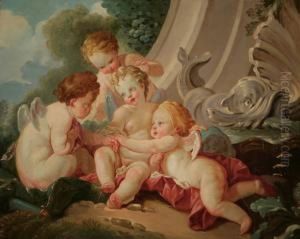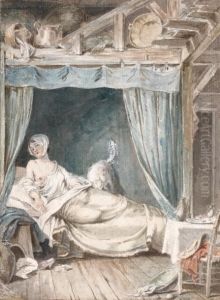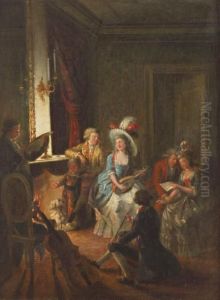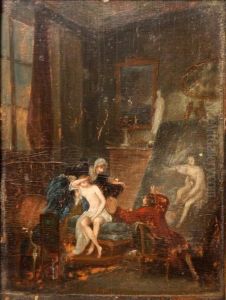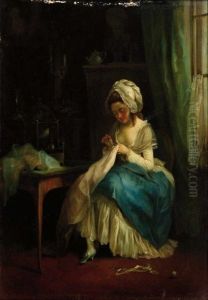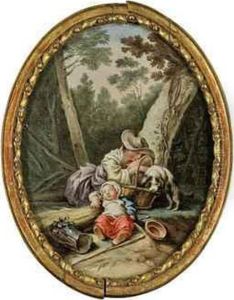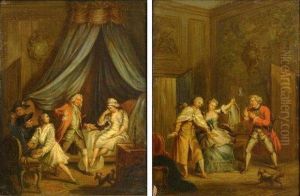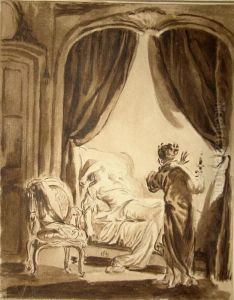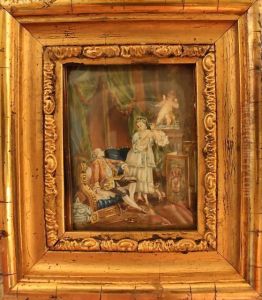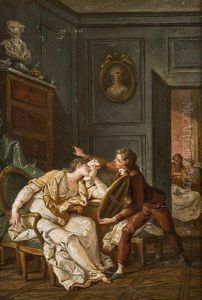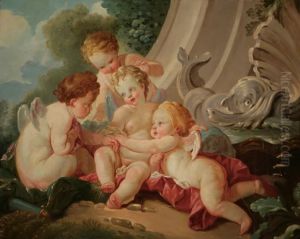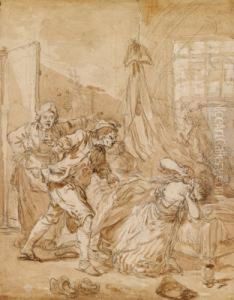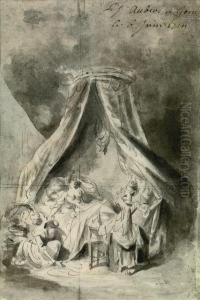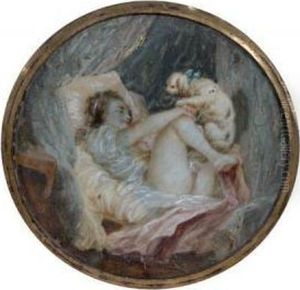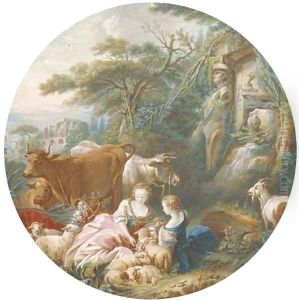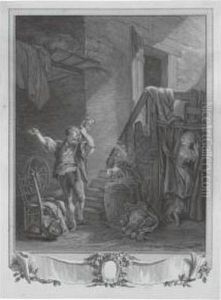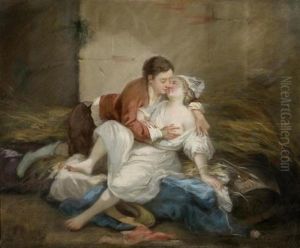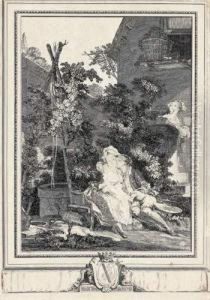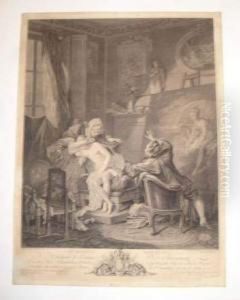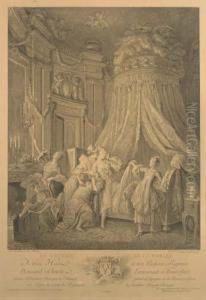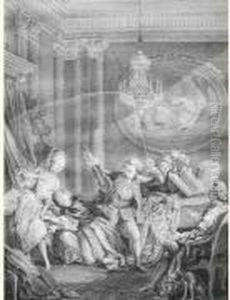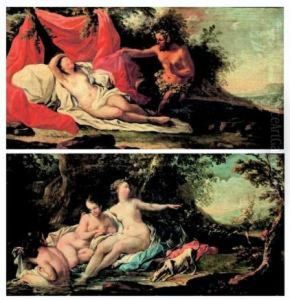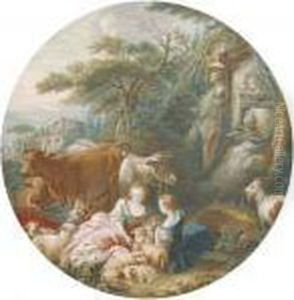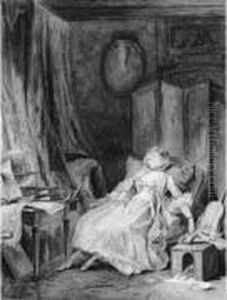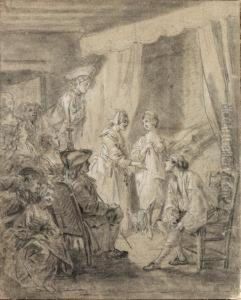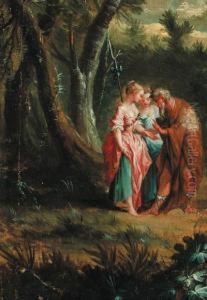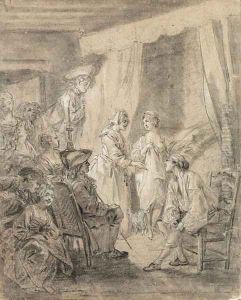Pierre-Antoine Baudouin Paintings
Pierre-Antoine Baudouin was a French painter and illustrator, born on October 17, 1723, in Paris. He came from an artistic family and was the son of a well-known engraver, Michel Baudouin. Pierre-Antoine was initially trained by his father before becoming a student of the celebrated Rococo painter François Boucher, who was also his father-in-law. Boucher's influence is evident in Baudouin's delicate and sensual style, which often celebrated the frivolity and intimate moments of the upper classes.
Baudouin's career flourished in the mid-18th century, an era in which the French art world was dominated by the Rococo style, with its emphasis on lightness, grace, and playful subjects. His works were characterized by an exquisite touch, elegant compositions, and a light palette. He became known for his genre paintings, which depicted scenes of daily life, including moments of love and gallantry. These scenes were often set in boudoirs or pastoral landscapes, reflecting the tastes of his patrons.
In 1754, Baudouin received the prestigious Prix de Rome, but declined the opportunity to study in Italy. Despite not studying abroad, his art continued to gain recognition. In 1763, he was received into the Académie Royale de Peinture et de Sculpture, where he presented the painting 'La Paresseuse Italienne' (The Lazy Italian Woman) as his reception piece. His membership in the Académie allowed him to exhibit his work at the Salon, the official art exhibition of the Académie in Paris.
Throughout his career, Baudouin also produced a number of drawings and engravings, which contributed to his fame. His illustrations for books and literary works added to his repertoire, showcasing his versatility as an artist.
Baudouin's life was relatively short; he died on August 15, 1769, in Paris. His works, however, continue to be appreciated for their charm and historical value, offering insights into the art and culture of the Rococo period in France. Baudouin's legacy is overshadowed by the more famous artists of his time, such as Boucher and Jean-Honoré Fragonard, but his contributions to the period's artistic movements remain significant.
